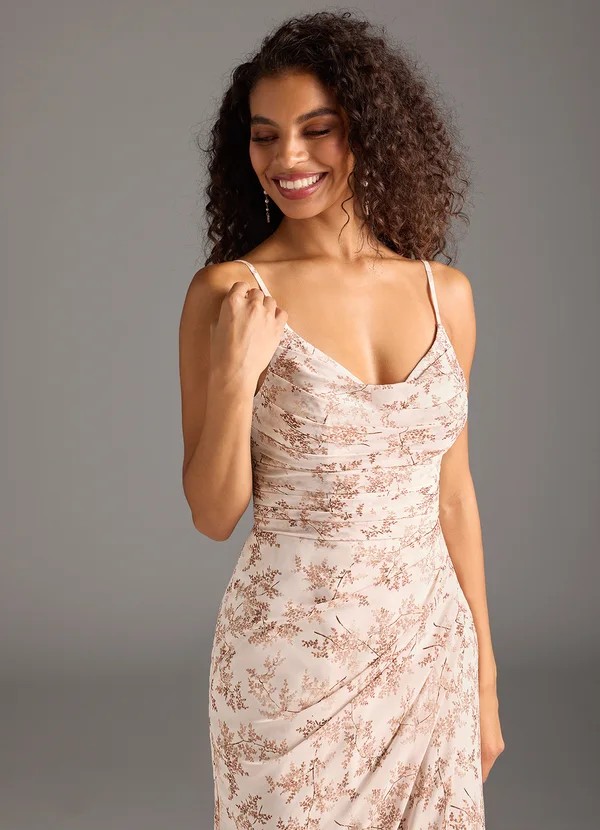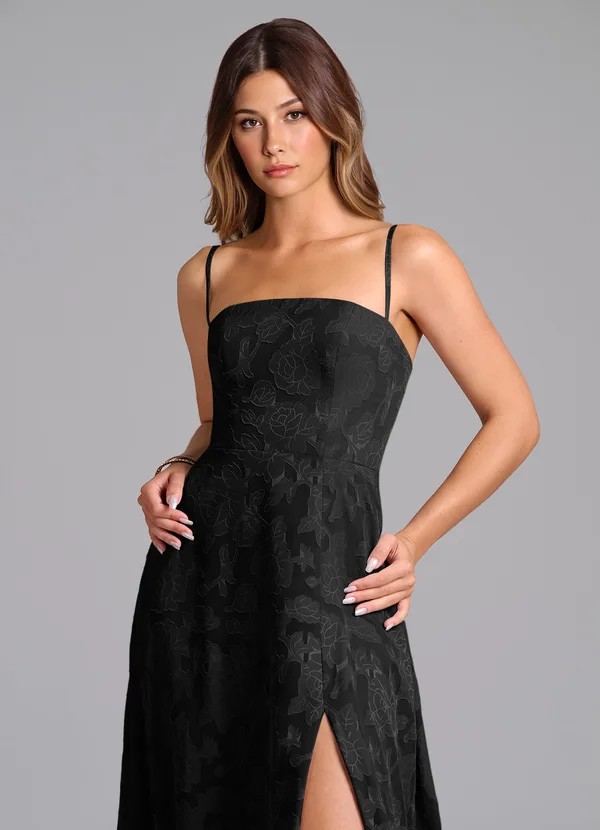What Is the Average Price of a Bridesmaid Dress?

Choosing bridesmaid dresses is one of the most exciting parts of wedding planning. But understanding how much to budget can feel tricky — prices vary widely based on style, fabric, designer, and customization.
The average bridesmaid dress typically falls within a mid-range cost that balances quality and comfort. What affects the total price are fabric type, design complexity, alterations, and accessories. Custom sizing, rush delivery, and special fabrics like velvet or satin tend to cost more.
Online retailers often provide affordable made-to-order options, while boutique or designer gowns can reach premium levels. Budget for tailoring, shoes, and jewelry to get a full picture of the total spend.
Quick Overview Table
| Cost Factor | How It Affects Price | Why It Matters | Budget Tip |
| Fabric | Luxury materials add cost | Impacts look & comfort | Choose light weaves like chiffon |
| Silhouette | Intricate cuts need more fabric & labor | Adds shape & detail | Pick simpler A-line or sheath |
| Designer/Brand | Premium labels charge more | Signature tailoring, unique patterns | Mix high & mid-tier options |
| Alterations | Adjustments for perfect fit | Most dresses need 1–2 rounds | Measure carefully before ordering |
| Customization | Color, length, sleeves, or lining changes | Personalized fit or modesty | Keep edits minimal to save |
| Accessories | Shoes, jewelry, wraps, undergarments | Complete the look | Coordinate colors early |
| Shipping/Rush Order | Faster production adds a fee | Ensures timely arrival | Order at least 3 months ahead |
Why Bridesmaid Dress Prices Vary

Every wedding is different — from backyard ceremonies to ballroom events — and so are the expectations for attire.
Here’s how core elements shape what bridesmaids spend:
Fabric & Material Quality
- Light, breathable fabrics like chiffon or tulle are typically more affordable.
- Heavier or specialty fabrics such as velvet, satin, or crepe cost more due to fiber content and drape.
- Dresses with multiple layers, boning, or lining require extra sewing time, which increases production complexity.
Design Complexity
- A simple sheath or A-line gown uses less material and fewer pattern pieces.
- Mermaid, ballgown, or pleated designs demand additional cutting and stitching.
- Lace appliqué, beading, or sequins add hours of handwork and elevate total cost.
Customization Options
- Made-to-order gowns tailored to body measurements ensure better fit but add production time.
- Optional features — sleeves, off-shoulder straps, or extra lining — may slightly increase cost.
- Coordinated color palettes (for example, mix-and-match tones of sage or dusty rose) allow flexibility and avoid bulk alterations later.
Brand or Retail Channel
- Online retailers often use direct-to-consumer models, eliminating markups.
- Boutique or designer lines offer luxurious fabrics, in-store fittings, and exclusive patterns.
- Rental services provide short-term use at a fraction of buying cost, ideal for one-time wear.
Alterations and Fittings
- Nearly every bridesmaid dress needs small adjustments around the bust, waist, or hem.
- The first fitting typically happens after the dress arrives, followed by a final check two weeks before the event.
- Plan enough time — roughly a month — to allow for these steps without rush fees.
Accessories and Styling
- Don’t forget shoes, undergarments, jewelry, and hair accessories — these complete the outfit.
- Coordinating with the bridal party early avoids last-minute mismatches or overspending.
How to Plan a Realistic Bridesmaid Dress Budget

Creating a group budget keeps the bridal party comfortable and avoids awkward surprises.
Here’s how to build a smart estimate everyone can agree on:
- Start Early: Choose styles at least three months before the wedding.
- Discuss Ranges: Brides should share the expected price range upfront.
- Factor in Tailoring: Allow space in the budget for basic alterations.
- Include Accessories: Shoes, bags, and hairpieces can add up quickly.
- Set a Cushion: Reserve extra funds for last-minute emergencies or weather changes.
Step-by-Step Budget Planning Guide
- Set Your Base Range
Decide on the per-dress range that feels comfortable for everyone.
Consider the overall wedding style — formal, semi-formal, or casual — and the venue climate. - Choose the Retail Path
Compare online custom-made options, rental platforms, and local boutiques.
Each offers unique benefits for timeline and personalization. - Select the Fabric Family
- Lightweight (chiffon, mesh): good airflow, easy movement.
- Medium (satin, charmeuse): elegant sheen for evening weddings.
- Structured (taffeta, mikado): crisp look for classic themes.
- Finalize the Silhouette
Encourage bridesmaids to try A-line, empire, or wrap styles that flatter different body shapes.
Consistent color with varied silhouettes ensures harmony and comfort. - Confirm Alteration Timeline
- First fitting: around 3–4 weeks after delivery.
- Second fitting: about 2 weeks before the wedding.
- Steam and store the dress in a cool, dry area before the big day.
How to Save on Bridesmaid Dresses (Without Compromise)

Every bridal party wants beautiful photos and happy wallets.
Here are practical tips to reduce costs while keeping quality intact:
- Order Together: Group orders often qualify for discounts or shipping perks.
- Choose Convertible Styles: One dress, multiple ways to wear — perfect for mixed body types.
- Skip Unnecessary Customizations: Minor sleeve or hem changes can be done later.
- Look for Sales & Seasonal Collections: Off-season colors or discontinued lines are budget-friendly.
- Reuse & Restyle: Choose a dress versatile enough for future formal events.
Popular Fabrics and Their Effect on Pricing
| Fabric Type | Texture & Look | Durability | Best Season | Budget Range |
| Chiffon | Light, flowy, matte finish | Moderate | Spring–Summer | Lower |
| Satin | Smooth, glossy, elegant | High | Year-round | Mid–High |
| Velvet | Plush, soft, luxe | Strong | Fall–Winter | High |
| Crepe | Grainy texture, graceful drape | Strong | All seasons | Mid |
| Tulle | Sheer, layered, airy | Delicate | Summer | Lower |
| Lace Overlay | Intricate detail | Moderate | All seasons | Mid–High |
Tip: Match fabric type to climate. Heavier materials work best for cooler months, while lighter ones are ideal for outdoor or destination weddings.
Online vs Boutique: What’s the Difference?
- Online Retailers
- Made-to-order sizing within a few weeks.
- Lower base price, higher flexibility in color and style.
- Ideal for large bridal parties or different locations.
- Boutique Stores
- In-person fittings and fabric samples.
- More personalized service but longer timelines.
- Perfect for couture or coordinated themes.
Pro Tip:
If your bridal party is spread across cities, online retailers with virtual fitting guides save coordination time.
Hidden Costs to Consider
Even when the base dress price fits the plan, small extras can add up.
Keep these in mind when budgeting:
- Tailoring Adjustments: Especially for petite or tall bridesmaids.
- Undergarments: Strapless bras, shapewear, or slip skirts for smoother lines.
- Dry Cleaning: Post-event maintenance, especially for delicate fabrics.
- Shoes & Jewelry: Can equal 10–20% of the total outfit cost.
- Hair & Makeup Coordination: Optional but often part of the overall wedding aesthetic.
How Early Should Bridesmaids Order?
Timing affects both stress levels and costs.
To stay safe:
- Order at least three months before the wedding.
This allows production, shipping, and first fitting. - Rush orders are available from many retailers but come with additional fees.
- Alterations usually need two separate appointments.
- Group orders ensure consistent dye lots and fabric batches for matching shades.
How to Keep Everyone Comfortable with the Budget
- Be Transparent: The bride should discuss expectations early.
- Offer Options: Let each bridesmaid choose between two or three similar styles.
- Communicate Clearly: Share links, size charts, and alteration policies.
- Consider Gifting: Some brides offset the cost by covering accessories or partial dress expenses.
- Encourage Rewearable Choices: Neutral tones or classic silhouettes can double for future occasions.

Point Checklist Before Buying
Review the size chart carefully and measure twice.Confirm color accuracy — order swatches if available.Check estimated delivery and fitting schedule.Discuss alterations timeline and seamstress options.Store the dress in a breathable garment bag once fitted.
Frequently Asked Questions
What factors affect bridesmaid dress prices the most?
Fabric quality, design complexity, and alterations have the biggest impact. Heavier fabrics, special detailing, or brand exclusivity tend to increase the total cost.
Do bridesmaids usually pay for their own dresses?
Yes, in most weddings, bridesmaids cover their own attire. However, some brides contribute to accessories or shipping to keep fairness across the group.
Is renting a bridesmaid dress worth it?
It can be a smart option for one-time use or destination weddings. Just check return policies and ensure enough time for exchanges if sizing issues arise.
When should bridesmaids start shopping for dresses?
Ideally, 4–6 months before the wedding date. This leaves enough time for group coordination, production, and alterations.
How can I make sure all dresses match in color?
Order together from the same retailer to ensure fabric dye consistency. Avoid last-minute reorders from separate batches, as tones may slightly vary.
What’s the best silhouette for all body types?
A-line and wrap dresses flatter most figures.They balance the bust and waist while allowing comfortable movement during the ceremony and reception.